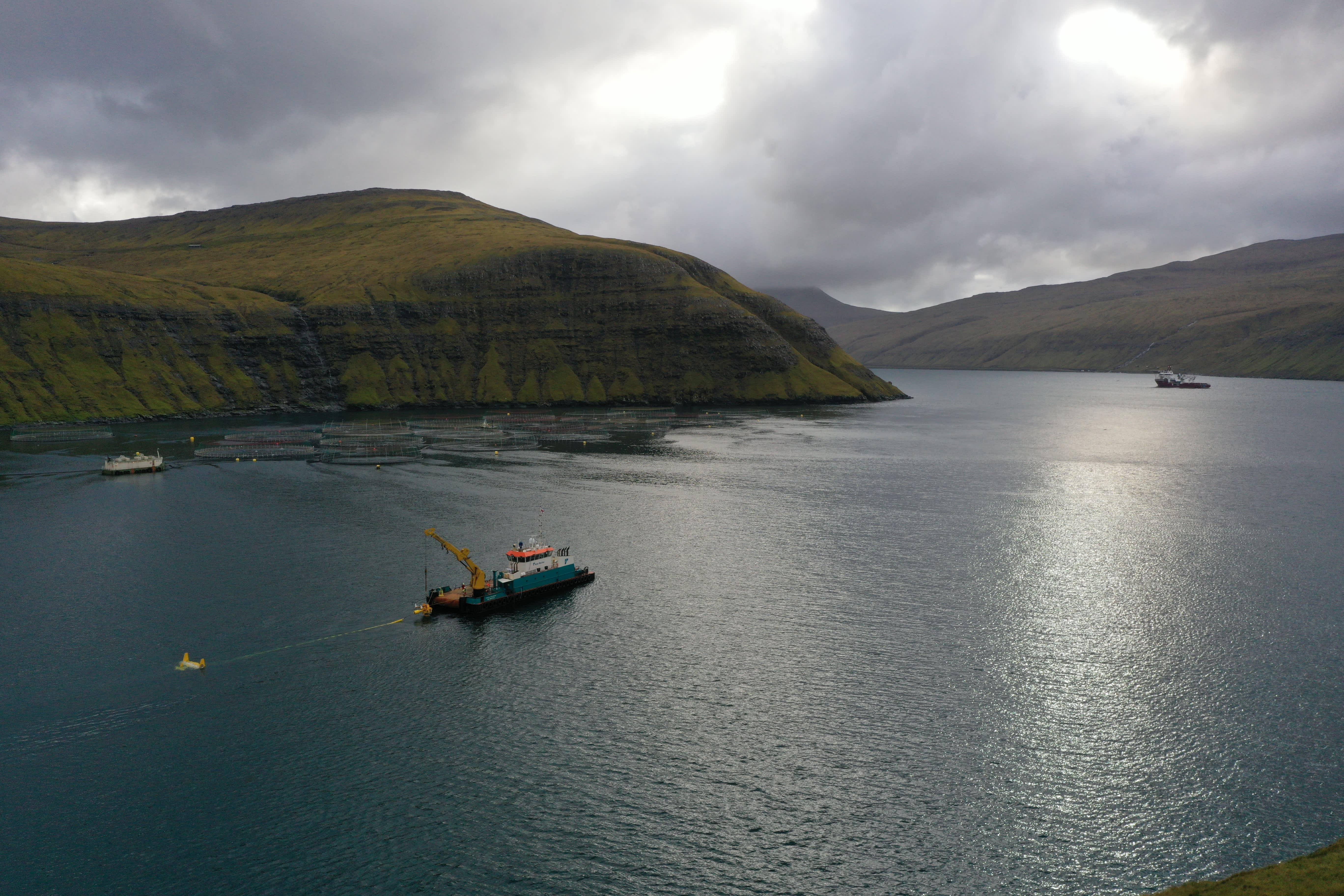Minesto’s system is based on the idea of using a kite-like system in marine environments.
Minesto
A tidal power project located in the Faroe Islands has started to send electricity to the grid, in the latest example of how marine based technologies are being deployed and used around the world.
The small 100 kilowatt tidal kite system, known as DG100, was installed back in October, with commissioning activities starting at the same time.
In an announcement earlier this week, Minesto – a firm headquartered in Gothenburg, Sweden – said electricity was being sent to the grid as part of a power purchase agreement with Faroese utility SEV.
The development is located in in the Vestmannasund strait, in the northwest of the Faroe Islands, an archipelago situated in the northeast Atlantic Ocean between Iceland and Scotland.
Minesto’s technology takes the concept of flying a stunt kite and transfers it to water in order to produce electricity.
It does this by harnessing underwater current, which creates a hydrodynamic lift force on the wings of the “kite,” generating movement.
An onboard control system and rudders steer the kite in a figure of eight trajectory. As it moves, water flows through the system’s turbine, generating electricity.
“Although this is still on (a) trial basis, we are confident that tidal energy will play a significant part in … Faroese sustainable electricity generation,” Hakun Djurhuus, CEO of SEV, said in a statement issued on Tuesday.
“Unlike other sustainable sources, tidal energy is predictable,” he added, claiming that this made it more stable than other sources such as wind power.
‘Great potential’
Looking ahead, SEV and Minesto are aiming to develop microgrid and utility scale systems based on the technology currently in use.
The Faroe Islands is one of several locations now looking to develop marine based renewable energy systems.
Another archipelago situated off the north coast of Scotland, Orkney, is home to the European Marine Energy Centre, for example. EMEC, as it’s known, acts as a hub for wave and tidal energy developers to test and assess their technologies in the open sea.
Over in the U.S., Verdant Power’s Roosevelt Island Tidal Energy project, in New York’s East River, has been in development since 2002. In late October, the initiative took another step forward when a new tidal power array consisting of three turbines was installed.
And while there are grand plans for the marine based renewables sector — the European Union wants 40 gigawatts of ocean energy such as tidal and wave power by 2050, up from 13 megawatts today — a range of challenges exist when it comes to the development and expansion of the technology.
The International Energy Agency has described marine technologies as holding “great potential” but adds that extra policy support is required for research, design and development in order to “enable the cost reductions that come with the commissioning of larger commercial plants.”
The industry also has a long way to go in order to catch up with other more established sources of renewable energy such as solar and wind.
Last year, just 1.52 megawatts (MW) of tidal stream capacity was added in Europe, according to Ocean Energy Europe. For wave energy, additions were 0.6 MW.
To put these numbers into context, European countries installed just over 3.6 gigawatts of offshore wind capacity in 2019, according to data compiled by WindEurope.
